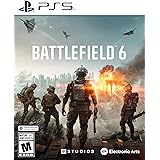The Ultimate Lenovo Legion Y700 Gen 4: Redefining the Gaming Tablet Experience
In the dynamic world of mobile gaming, hardware evolution is relentless. Last year, while many Chinese mobile device manufacturers were pushing boundaries with the Snapdragon 8 Elite, the Lenovo Y700 Gen 3 regrettably lagged behind. It shipped without the latest chipset, omitted a crucial TF card slot, featured a smaller battery, and notably, its screen suffered from slow, unresponsive touch input. These shortcomings presented significant frustrations for power users and serious mobile gamers.
Addressing these critical issues head-on, the new Lenovo Legion Y700 Gen 4 emerges as a formidable contender, meticulously engineered to resolve its predecessor’s flaws. As highlighted in the accompanying video review, this iteration boasts a completely redesigned aesthetic, reintroduces the essential TF card slot, integrates the latest flagship processor for unparalleled performance, offers a visibly sharper display, and packs a more substantial battery. This isn’t just an incremental update; it’s a strategic reorientation aimed squarely at delivering an uncompromising gaming tablet experience.
From Disappointment to Dominance: The Lenovo Legion Y700 Gen 4 Gaming Tablet Arrives
The previous generation, the Y700 Gen 3, faced considerable criticism for its outdated specifications at launch, especially its lack of a cutting-edge processor when competitors were embracing the Snapdragon 8 Elite. This omission, coupled with a smaller battery and the perplexing removal of a TF card slot, alienated a segment of its core audience seeking a truly high-performance portable gaming device. The most impactful flaw, however, was its subpar screen responsiveness, a critical failing for any device aspiring to be a serious gaming tablet.
With the Lenovo Legion Y700 Gen 4, Lenovo has clearly listened to feedback, making this a pivotal upgrade for those still using Gen 1 or Gen 2 models. The design, while maintaining the familiar one-piece aluminum unibody construction, sees subtle refinements. This aluminum chassis provides a premium tactile feel and a visually seamless back cover, available in classic white or black. While the review model showcased the black variant, the white version often proves more resistant to fingerprint smudges, a common aesthetic concern for active users.
A strategic decision by Lenovo involved removing one of the rear cameras, signaling a clearer focus on the device’s primary role as a dedicated gaming tablet rather than a general-purpose multimedia device. This streamlining also contributes to a reduced body thickness, now a svelte 7 mm, without significant changes in overall weight. Although a smaller camera bump would have been a welcome aesthetic refinement, the focus remains firmly on performance and ergonomics for extended gaming sessions.
Unpacking the Design and Connectivity Innovations
Connectivity on the Lenovo Legion Y700 Gen 4 receives a significant boost, featuring dual Type-C ports—one strategically placed on the bottom and another on the right side. Both ports support 68-watt PPS (Programmable Power Supply) fast charging, ensuring rapid power delivery for minimal downtime. The side port is particularly noteworthy, offering impressive 10 Gbps transfer rates and robust DP (DisplayPort) video output capabilities. Our tests confirm it can seamlessly connect to external displays up to 4K resolution at 144 Hz, providing an expansive and fluid visual experience for desktop-style gaming or media consumption. While a 4K 160 Hz option is theoretically available, pushing beyond 144 Hz currently results in display signal loss, indicating a potential bandwidth or driver limitation.
Curiously, the Y700 Gen 4 exhibits some quirks with USB hubs integrated into monitors; it struggles to recognize devices plugged into these hubs concurrently with a direct display connection. The bottom USB-C port, while capable of recognizing peripherals, operates at a more modest 480 Mbps and lacks video output functionality, making it primarily suitable for charging and lower-bandwidth data transfer. The welcome return of the TF card slot, supporting microSD cards up to an expansive 2 terabytes, is a significant win for gamers and power users requiring vast amounts of storage for games, media, or emulation ROMs. While a Samsung V30 microSD card tested yielded slower read/write speeds compared to the built-in UFS 4.1 storage, it offers a cost-effective and flexible solution for expanding capacity without sacrificing internal storage for primary applications.
For wireless connectivity, the Lenovo Legion Y700 Gen 4 embraces Wi-Fi 7, the latest generation of Wi-Fi technology, promising lower latency and higher theoretical throughput. However, due to regional infrastructure constraints, specifically related to China’s 6G construction efforts, the Gen 4’s Wi-Fi 7 implementation is currently limited to a 160 MHz bandwidth. This means its Wi-Fi can handshake up to 2882 Mbps, with actual real-world transfer rates observed exceeding 2000 Mbps. While not fully utilizing Wi-Fi 7’s maximum potential, these speeds are still exceptionally fast, providing a robust and responsive online gaming experience, minimizing lag and ensuring quick game downloads and updates.
Display and Audio: A Sharper View for Immersive Play
The visual experience on a gaming tablet is paramount, and the Lenovo Legion Y700 Gen 4 retains an 8.8-inch LCD panel, a choice that contrasts with the growing trend towards OLED displays in high-end mobile devices. While it’s an LCD, the resolution has seen an improvement, resulting in a pixel density of 408 PPI (pixels per inch). This significantly enhances detail and sharpness, making the display noticeably more intricate than even the highly regarded iPad Mini. This high PPI ensures crisp text and finely rendered game graphics, immersing players deeper into their virtual worlds.
Despite the resolution bump, the LCD panel’s inherent characteristics present some trade-offs. It peaks at 600 nits of brightness, which, while adequate for most indoor settings, can feel a bit constrained in bright outdoor environments compared to brighter OLED alternatives. Furthermore, the contrast isn’t as profound as what an OLED display can offer, meaning blacks may not be as deep and colors might lack the vibrant punch seen on panels with infinite contrast ratios. This LCD choice, while cost-effective and generally resistant to burn-in, does impact battery life to some extent, as observed in comparisons with other tablets. The critical improvement, however, lies in its touch sampling rate. Previous generations suffered from touch latency issues despite advertised high rates, a fatal flaw for competitive gaming. The Gen 4 demonstrates significantly better performance, offering a more responsive and accurate touch experience, crucial for fast-paced titles where every millisecond counts.
In terms of audio, the Gen 4’s speakers, while functional, do not represent a significant leap forward. Comparative listening tests, pitting the Y700 Gen 4 against devices like the iPad Mini, reveal a noticeable difference in audio fidelity. The Y700’s speakers tend to reproduce fewer background details, such as subtle wind or sand effects in game environments, and music playback can sometimes sound a touch harsh. While adequate for casual listening, serious audiophiles or competitive gamers might still opt for headphones to achieve a more nuanced and immersive soundstage.
Core Performance: Unleashing the Power of the Lenovo Legion Y700 Gen 4
At the heart of the Lenovo Legion Y700 Gen 4 lies a formidable hardware configuration, meticulously chosen to deliver peak mobile gaming performance. It integrates the flagship Snapdragon 8 Elite processor, a powerhouse capable of handling the most demanding applications and graphics-intensive games with ease. This is paired with LPDDR5X RAM operating at a blistering 9600 Hz, ensuring rapid data access and seamless multitasking. Complementing these components is UFS 4.1 flash storage, which provides incredibly fast read and write speeds, drastically reducing game load times and system boot-up durations. This combination represents arguably the most potent hardware stack currently available in the mobile sector, leading to exceptional benchmark scores across the board.
In synthetic benchmarks, the Y700 Gen 4 consistently achieves high scores in platforms like 3DMark and GeekBench, validating its raw processing prowess. For a gaming tablet, however, real-world performance under sustained load is paramount to prevent frame drops and lag during critical gameplay moments. Our rigorous testing included 20 consecutive rounds of 3DMark’s Wild Life Extreme stability test. The Y700 Gen 4 maintained an impressive 77% stability at a 2K resolution, demonstrating its capacity for sustained performance. Pushing to a 4K resolution, stability naturally dropped to 67%, still a respectable figure for such a compact device under extreme stress. These metrics indicate a robust thermal management system working to keep throttling at bay during intense gaming sessions.
Real-world gaming tests commenced with Honkai Star Rail in the demanding “Golden Hour” scenario. Running at a comfortable 25 degrees Celsius ambient temperature with performance mode activated, the tablet delivered an almost perfect frame rate, offering a smooth and responsive gameplay experience. However, this high performance comes with a notable power draw; the tablet consumed 10% of its battery during a mere 15-minute test, indicating it’s quite a power hog during peak gaming. Transitioning to the even more graphically intensive Wuthering Waves, the Y700 Gen 4 initially consumed power at around 16 watts, a figure close to its peak during the 3DMark tests. After approximately six minutes of sustained gameplay, some intermittent lag began to manifest, with frame rates occasionally dipping before recovering to 60 FPS in less complex scenes. The temperature peaked at 48 degrees Celsius, primarily concentrated in the central area of the back, remaining tolerable without causing significant discomfort for handheld use. Interestingly, disabling Lenovo’s integrated gaming assistant sometimes yielded a superior and cooler gaming experience, suggesting that third-party or system-level optimizations could offer better thermal and performance efficiency than the tablet’s native utility.
Optimizing Your Game: Software and Battery Life for Extended Sessions
Beyond raw hardware, software optimizations play a crucial role in shaping the gaming experience on the Lenovo Legion Y700 Gen 4. Our tests revealed that while Lenovo’s dedicated gaming assistant offers various features, actively disabling it and allowing the system to manage resources can occasionally lead to better gaming performance and reduced thermal output. This unexpected finding suggests that for peak performance, users might experiment with different power management settings. Another significant improvement addresses a previous “fatal flaw” for gamers: touch sampling rate. While previous generations advertised high rates, actual performance often fell short of flagship phones. The Gen 4 significantly rectifies this, offering a much more responsive and accurate touch experience, crucial for precise inputs in competitive titles.
For gamers utilizing emulators or games requiring a joystick, the peripheral mode with custom mapping can be beneficial. However, for titles that natively support joysticks, such as Genshin Impact, ZZZ, and Wuthering Waves, it is advisable to keep this mode off. Activating it unnecessarily can lead to conflicts, rendering the joystick unresponsive or causing erratic behavior. This level of granular control allows users to fine-tune their input methods for optimal gameplay, ensuring compatibility and responsiveness across a diverse library of games.
Battery capacity sees an upgrade to 29 watt-hours from the previous 25.3 watt-hours. While this increase might only translate to an additional 20 to 30 minutes of gameplay, it contributes to overall longevity. Lenovo’s decision to stick with regular lithium batteries instead of higher energy density silicon carbide cells is notable. While silicon carbide can pack more capacity into the same physical size, it often comes with a trade-off in long-term cycle life compared to traditional lithium-ion. Thus, this choice may prioritize durability over sheer capacity. Crucially, the Lenovo Legion Y700 Gen 4 implements excellent battery protection features, including bypass charging. Unlike some competitors that require a proprietary charger for this functionality, the Y700 supports bypass charging with any PD (Power Delivery) or PPS charger. This feature allows the device to draw power directly from the charger, bypassing the battery, which significantly reduces heat generation during extended gaming sessions and prolongs battery lifespan.
Charging power remains at a robust 68 watts. In real-world tests, the device reached a maximum input of 60 watts, albeit for a brief two-minute window, before settling. It achieved an 80% charge in approximately 40 minutes and reached 90% in 61 minutes under typical conditions. Charging in a cooler environment, such as a 25-degree Celsius room, extended the maximum power input duration to 10 minutes, reducing the 80% charge time to 35 minutes and achieving a full charge in 58 minutes. While these speeds are respectable, they don’t represent a dramatic improvement over previous generations, suggesting a focus on battery health and sustained performance rather than outright speed. Using a third-party charger that only supports the PD protocol results in slower charging times, reaching 80% in 65 minutes and a full charge in 93 minutes. For battery life testing, a comprehensive scenario involving one hour of Honkai Star Rail, half an hour of Wuthering Waves, and two hours of movie playback left the device with 22% battery remaining, indicating solid endurance for mixed usage.
Strategic Considerations: Where the Lenovo Legion Y700 Gen 4 Stands
The Lenovo Legion Y700 Gen 4 marks a significant evolution, transforming from a device with notable shortcomings into a highly capable gaming tablet. Its strengths are undeniable: impeccable performance driven by the Snapdragon 8 Elite, significantly improved touch responsiveness, and versatile connectivity options including a dedicated TF card slot and advanced display output. The implementation of bypass charging is a vital feature for dedicated gamers, safeguarding battery health during prolonged high-load usage.
However, the device is not without its limitations. The continued use of an LCD screen, while improved, positions it behind competitors like the iPad Mini, and upcoming models from Redmi and Red Magic, which are embracing more vibrant and higher-contrast OLED panels. The 600 nits brightness and moderate contrast of the LCD, along with the somewhat uninspiring speaker quality, represent areas where the tablet doesn’t lead the pack. Specific USB hub compatibility issues and the regional Wi-Fi 7 bandwidth limitations are minor but present considerations. For instance, the Xiaomi Tablet 7 Ultra, a larger 14-inch device currently undergoing testing, surprisingly demonstrates lower gaming power consumption compared to the 8.8-inch Y700, suggesting room for further power efficiency optimization.
Despite these drawbacks, the Lenovo Legion Y700 Gen 4’s launch price mirrors that of its predecessor, making it a compelling value proposition given the substantial upgrades. The larger heat dissipation plate and optimized chip layout effectively mitigate overheating and thermal throttling, ensuring consistent performance during intense gaming sessions. The new screen and touch ICs definitively resolve the prior touch latency issues, making the Lenovo Legion Y700 Gen 4 a truly responsive and high-performance gaming tablet. It stands as a strong recommendation for mobile gamers seeking cutting-edge hardware and a dedicated portable gaming experience, offering a compelling blend of power, refined features, and competitive pricing in its class.









